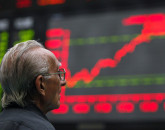Pakistan’s exports to US climb 10.4% in FY25’s first eight months
SIFC-led reforms seen as catalyst for export recovery

Pakistan’s exports to the United States rose by 10.4% during the first eight months of the current fiscal year, driven largely by robust performance in textiles and garments, accoring to a report published on the state-run PTV World website.
Overall exports to North America reached $4.2 billion in the July–February period of FY25, marking a 9.7% year-on-year increase.
The surge was led by the textile sector, which accounted for approximately 94% of total exports to the U.S., underlining the industry's continued importance to Pakistan’s trade balance.
Officials credited the growth to government trade reforms and facilitation efforts by the Special Investment Facilitation Council (SIFC), which has sought to streamline investment and export processes.
The uptick in exports is viewed as a welcome development for Pakistan’s foreign exchange position, which remains under pressure despite recent improvements in reserves.
Analysts say the increase signals a gradual recovery in the country’s export sector, and reflects growing demand for Pakistani goods in key overseas markets.
Further trade gains could depend on global economic conditions and continued structural improvements in export infrastructure, they added.
Moreover, remittances to Pakistan are expected to have reached a record $4.1 billion in March, State Bank of Pakistan (SBP) Governor Jameel Ahmad said on Monday, signalling renewed economic momentum in the wake of last year’s fiscal crisis.
Speaking at the Pakistan Stock Exchange, Ahmad said that foreign exchange reserves were projected to surpass $14 billion by June, helped by rising inflows from overseas Pakistanis and improved balance of payments.
Remittances rose to $3.12bn in February, up 40% year-on-year, and increased by 3.8% month-on-month. Total inflows for the first nine months of FY25 (July–March) stood at $28.07bn, a 33% increase from the same period last year.
According to brokerage AKD Securities, the March inflows were primarily from Saudi Arabia ($987m), the UAE ($842m), the UK ($684m), and the US ($419m).
Ahmad added that Pakistan faced foreign debt obligations of $26bn in FY25, but around $16bn of that was expected to be rolled over or refinanced, easing near-term pressure.
Despite an underperforming agricultural season, the SBP governor said GDP growth was likely to fall in the 2.5–3% range, down from a potential 4.2% had farming output met expectations.
Ahmad also noted a significant drop in inflation, calling March’s consumer price index (CPI) reading of 0.7% year-on-year “historic” — the lowest since December 1965.
The surprise decline in inflation exceeded market and finance ministry expectations, which had forecast between 1% and 1.5%. It was largely attributed to falling prices of wheat, perishable food items, and electricity charges.
Pakistan faced a deep economic crisis in 2023, prompting a $7bn bailout from the International Monetary Fund. The IMF forecasts Pakistan’s GDP growth to gradually rise to 4.5% by 2029.






















COMMENTS
Comments are moderated and generally will be posted if they are on-topic and not abusive.
For more information, please see our Comments FAQ